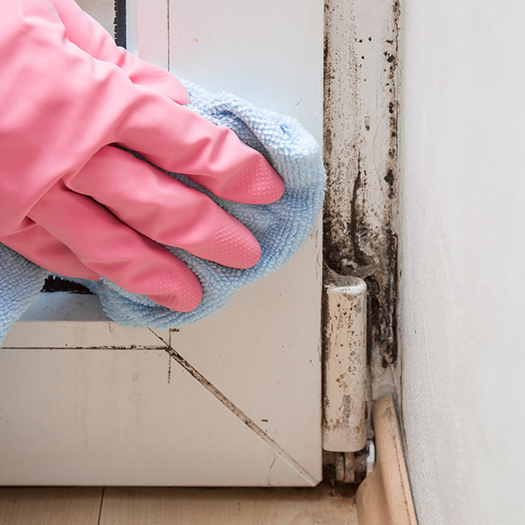To be, or not to be…but is it possible that should not be the question? People use the two terms, Mildew or Mold, somewhat interchangeably when describing what appears to be minor discoloration and suspect growth. However, others use the term “Mildew” to describe what they perceive to be harmless growth whereas “Mold” is associated with more toxic and potentially dangerous growth.
However, at the end of the day mildew is just a form of mold, or as FEMA described it, “early stages of mold growth”, within their pamphlet “Dealing with Mold & Mildew in Your Flood Damaged Home”.

Mold or mildew growth, or colonies, may begin to form on building materials within 24-48 hours of the initial exposure to water. It is common to see many different types of molds, some potentially toxic, present in these colonies so it is essential that proper remediation begins to take place immediately.
Molds come in various types of shapes, textures, and colors, while mildew is typically observed as being of a white or gray powdery substance.
What is most commonly observed as “Mildew” is usually a mold from within the Ascomycota division, which tend to be lighter in color and more powdery in texture.
One mold that falls into this Ascomycota category is Aspergillus—an allergenic mold that can cause adverse health reactions.

Aspergillus is known to produce toxins called mycotoxins, which can spur allergy-like symptoms or what seems like a perpetual cold that never seems to go away. Mycotoxins have been associated with neurological symptoms including pain syndromes, movement disorders, delirium, and loss of balance and coordination.
It’s a potentially harmful mold that we see often in the remediation industry —mostly as a results of water damage but also in small amounts on windows and surrounding frames and sills; doors and frames; under bath mats; on shower curtains, between the liner and the curtain; under sink, and on bathroom grout or caulk.
Putting it all together you can see it is less important whether we call it “Mold” or “Mildew”, much more important that we determine the source, size of affected area, and then move to proper remediation.
Do you have concerns about your own residence, school, or business? For more information, or to schedule a Mold Inspection, Lead-Based Paint Inspection, Radon or Asbestos Inspection in Santa Clarita, the Antelope Valley, Ventura County, or Greater Los Angeles area you can submit an online request, call us (661) 219-5160 or email request to [email protected]
About Mailman Environmental
Mailman Environmental is Southern California’s leading consultant for indoor air quality testing, asbestos, mold, lead, VOCs, formaldehyde, soot, char, ash, and smoke damage, particulates, and other chemicals. Mailman Environmental and our contractors and vendors maintain an extensive list of certifications and accreditations from the State of California, Department of Public Health, and numerous professional organizations. Mailman Environmental proudly serves all of Southern California including Santa Clarita, Antelope Valley including Palmdale and Lancaster, Ventura County, San Fernando Valley, and the Greater Los Angeles area.
Sources:
https://www.fema.gov/pdf/rebuild/recover/fema_mold_brochure_english.pdf
